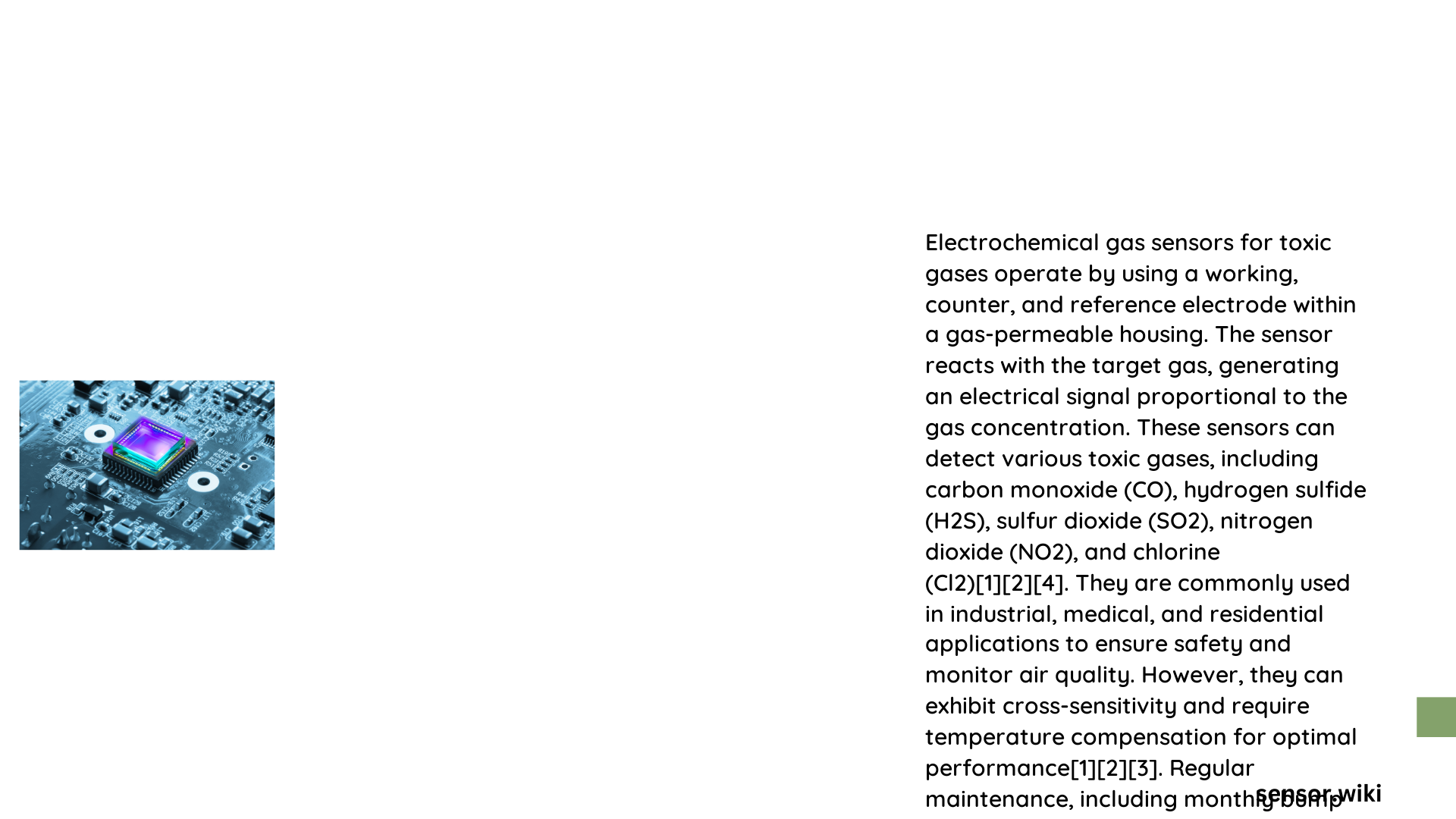Electrochemical gas sensors represent a sophisticated technological solution for detecting hazardous toxic gases in industrial, environmental, and safety-critical applications. These advanced sensors utilize precise electrochemical reactions to convert gas concentration into measurable electrical signals, enabling real-time monitoring and early warning systems for potentially life-threatening gas exposures across various sectors including manufacturing, mining, petrochemical, and environmental monitoring.
What Are Electrochemical Gas Sensors?
Electrochemical gas sensors are specialized devices designed to detect specific toxic gases through sophisticated electrochemical oxidation processes. These sensors operate by measuring electrical current generated when target gas molecules interact with specialized electrodes within an electrolytic cell.
Key Components of Electrochemical Gas Sensors
| Component | Function | Characteristics |
|---|---|---|
| Working Electrode | Primary gas interaction site | Catalyzes gas oxidation/reduction |
| Reference Electrode | Maintains stable electrical potential | Ensures consistent sensor performance |
| Counter Electrode | Completes electrical circuit | Facilitates electron transfer |
| Electrolyte | Conducts ionic reactions | Enables precise gas concentration measurement |
How Do Electrochemical Gas Sensors Detect Toxic Gases?

Electrochemical gas sensors detect toxic gases through a sophisticated three-stage process:
- Gas Diffusion: Target gas molecules penetrate a specialized membrane
- Electrochemical Reaction: Gas molecules undergo oxidation/reduction at working electrode
- Current Generation: Electrical current proportional to gas concentration is produced
Detection Performance for Common Toxic Gases
Hydrogen Sulfide (H2S) Detection
- Detection Range: 0-100 ppm
- Accuracy: ±3 ppm or 10% of reading
- Response Time: 30-120 seconds
- Sensitivity: High specificity with minimal cross-interference
Carbon Monoxide (CO) Detection
- Detection Range: 0-2000 ppm
- Resolution: 1 ppm increments
- Response Time: Approximately 30 seconds
- Sensitivity: Exceptional specificity for CO molecules
What Factors Influence Sensor Performance?
Several critical environmental factors impact electrochemical gas sensor performance:
- Temperature Stability: -40°C to +50°C operating range
- Humidity Tolerance: 0-95% non-condensing
- Pressure Compensation: Atmospheric ±20% variation
- Interference Resistance: Advanced anti-interference mechanisms
What Are Practical Applications?
Electrochemical gas sensors find extensive applications across multiple domains:
- Industrial Safety Monitoring
- Environmental Protection
- Workplace Hazard Detection
- Emergency Response Systems
- Research and Laboratory Applications
How to Select the Right Electrochemical Gas Sensor?
When choosing an electrochemical gas sensor, consider:
- Specific Gas Detection Requirements
- Sensitivity and Detection Range
- Environmental Operating Conditions
- Response Time
- Calibration Complexity
- Long-term Stability
Cost Considerations
Electrochemical gas sensor pricing varies significantly:
- Basic Sensors: $50-$100
- Advanced Models: $200-$1,000
- Replacement Modules: $50-$500
- Calibration Expenses: $20-$100 per session
Emerging Trends in Electrochemical Gas Sensor Technology
- Miniaturization
- Enhanced digital integration
- Improved multi-gas detection capabilities
- Machine learning-enabled predictive maintenance
- Wireless connectivity and IoT compatibility
Conclusion
Electrochemical gas sensors represent a critical technological solution for toxic gas detection, offering unprecedented precision, reliability, and safety across diverse industrial environments.
References:
– Winsen Sensor Documentation
– Det-Tronics Sensor Specifications
– Emerson Gas Sensor Technical Manual
